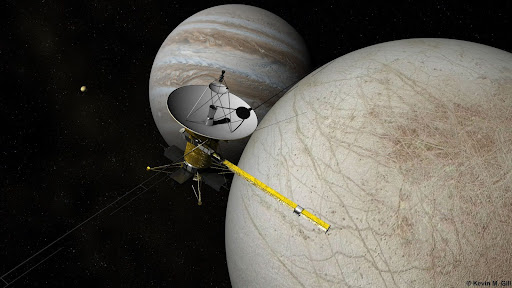
NASA’s Europa Clipper is taking off and is set sailing on a long journey to one of Jupiter’s many icy moons, Europa. The spacecraft was launched on October 14th at NASA’s Kennedy Space Center.
This spacecraft is already the largest one ever built by NASA, but it is also the first mission dedicated to studying a potential ocean world beyond Earth. The spacecraft will first travel 1.8 billion miles, first to Mars in four months and then back to Earth for a gravity assist flyby in 2026. It will arrive at Jupiter in April 2030, and the spacecraft will fly past Europa 49 times.
NASA’s Galileo mission showed strong evidence that under Europa’s ice lies an enormous ocean with more water than all of Earth’s oceans combined. Scientists also have found evidence that Europa’s ocean may host organisms or energy compounds.
Europa is the fourth largest of Jupiter’s 95 moons and has a subsurface ocean estimated to be 40 to 100 miles deep. Scientists strongly believe that there’s a saltwater ocean beneath Europa’s shell, holding twice as much water as Earth’s ocean combined.
If this mission proves that Europa is a habitable planet, it may mean there are more habitable planets than just our home, Earth.






